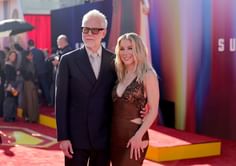
In the Lord of the Rings series by J.R.R. Tolkien, hobbits are a fictional, diminutive humanoid race who inhabit the lands of Middle-earth.
Hobbits, small and charming people who live in the Shire, represent a special kind of species in J.R.R. Tolkien's world of writing. Famous for enjoying peace, tasty meals, and easy joys, those simple people live quietly in their warm little homes. But their calm life is suddenly changed when unexpected happenings pull them into a big journey that will check how brave they are and how tough they can be. This fascinating trip happens in a classic story about friends sticking together, acts of bravery, and the constant fight between what is right and wrong in the imaginary world called Middle-earth.
What is a Hobbit in Lord of the Rings?
In The Lord of the Rings by J.R.R. Tolkien, Hobbits are fictional small-sized people known for their fondness for tranquility, coziness, and delicious meals. Created by Tolkien, they are also called Halflings and they were inspired by stories he heard in England, things that happened to him, and his wish to make a group of beings that were lovable and easy to understand. Taking inspiration from the English countryside which is quite rural, Tolkien imagined a place called the Shire where Hobbits live. It is very peaceful and looks like farmland. The Hobbits are known for being short, having big strong feet, and hair that curls.
Hobbits are shown as humble and quiet folk who dwell in little homes dug into the ground, enjoying a life that is plain and focused on farming. Even though they prefer peace, they show surprising bravery and strength when meeting with difficult situations. Bilbo and Frodo Baggins are very important Hobbits in the stories written by Tolkien. Bilbo is at the heart of "The Hobbit," while Frodo is essential to "The Lord of the Rings." These characters help show us big ideas like bravery, close bonds between friends, and how normal people can win over those who seem much greater. They have a special appeal that has attracted readers for many years.
What are the different types of Hobbits?
In Peter Jackson's 2001 film adaptation of The Fellowship of the Ring, during Bilbo Baggins's eagerly anticipated 111th birthday celebration, he delivers a speech to the assembled hobbits, including Bagginses, Boffins, Tooks, Brandybucks, Grubs, Chubs, Hornblowers, Bulgers, Greyskulls, Bracegurdles, and Proudfoots (or Proudfeet!). However, in Tolkien's The Lord of the Rings books, specifically in the prologue titled 'Concerning Hobbits, and other matters,' the origin of these creatures is introduced.
It traces back to the etymology of the Halflings, a moniker given because they are roughly half the size of Men. The beloved stories of Middle-earth largely unfold during the Third Age, during which hobbits enjoy a tranquil existence in Eriador, encompassing the Shire and Bree. However, before their settlement amidst verdant hills, hobbits were scattered across various lands, organized into bloodlines representing three distinct denominations of their species.
The Harfoots
The first group, referred to as Harfoots due to their distinctive hairy feet, were fond of agriculture and cherished the land. They possessed a deep affinity for wide expanses and lush meadows, embodying a farming ethos at their core. Originating from the foothills of the Misty Mountains, they were the pioneering hobbits to establish roots in the Shire. Their journey from the Misty Mountains involved intriguing interactions with dwarves during the Second Age.
The Fallohides
The next wave of settlers in Hobbiton were the Fallohides, distinguished by their fair complexion. This group represented the social elite, comprising affluent and prestigious families who cherished fine dining and strong familial bonds. Taller than their Harfoot counterparts by about half a foot, the Fallohides were deemed somewhat disruptive by their kin due to their adventurous pursuits, fearlessness, and inclination towards frivolity. These traits, influenced by their close association with Elves, led them to adopt skills in archery, storytelling, and historical record-keeping. It's from this lineage that Bilbo and Frodo inherited their adventurous spirit.
The Stoor
The third and final group to settle were the Stoors, also known as the "Riverfolk," renowned for their affinity for rivers. Unlike other hobbits, the Stoors preferred to dwell by the river's edge, finding solace in their boats on sunny days. They stood out amongst their kind for wearing shoes and their fondness for games and riddles. Many of the hobbits residing in Buckland during the Third Age, the setting of The Lord of the Rings books and film adaptations, traced their ancestry back to the Stoors, including the family line of Merriadoc Brandybuck, commonly known as Merry.
How old is Bilbo in The Hobbit and LOTR?
Born in 2890, Bilbo turns 50 when Gandalf invites him to accompany Thorin Oakenshield and his Dwarven companions on their quest at the start of the movie The Hobbit. This is evident when Bilbo mentions to Kíli, a fellow member of the company, in Lake-town that it's his 51st birthday. Considering that Hobbits reach adulthood at 33, Bilbo embarks on his adventure while still relatively young.
In The Lord of the Rings: The Fellowship of the Ring, Bilbo celebrates his 'eleventy-first' (or 111th) birthday in 3001 before departing Bag End for Rivendell. Seventeen more years pass until Frodo and Samwise Gamgee leave the Shire with the One Ring. Gandalf remarks at their departure about Bilbo's expedition to the Lonely Mountain "nearly 80 years before," indicating that The Lord of the Rings primarily occurs in 3018-3019 (77 years after The Hobbit), with Bilbo reaching the age of 128.
FAQs on Hobbit in Lord of the Rings
A. Most hobbits live longer life spans than men. The average life span of a hobbit is said to be around 100 years although many lived well beyond that as well.
A. Elves live indefinitely as they do not age in Middle-Earth, although they can be killed or injured so badly that their spirits leave their bodies. Not only that, they can get weary of life and opt to leave and go to the Undying Lands.
A. Hobbits are allowed to marry right out of their Tweens although many commonly waited two or three years after their formal engagement.









